One of the most common reasons that gardeners struggle to keep succulents alive is overwatering. Inexperienced gardeners often don’t realize that succulents need water far less frequently than other types of common houseplants. Even experienced gardeners can give their precious fat plants more water than necessary.
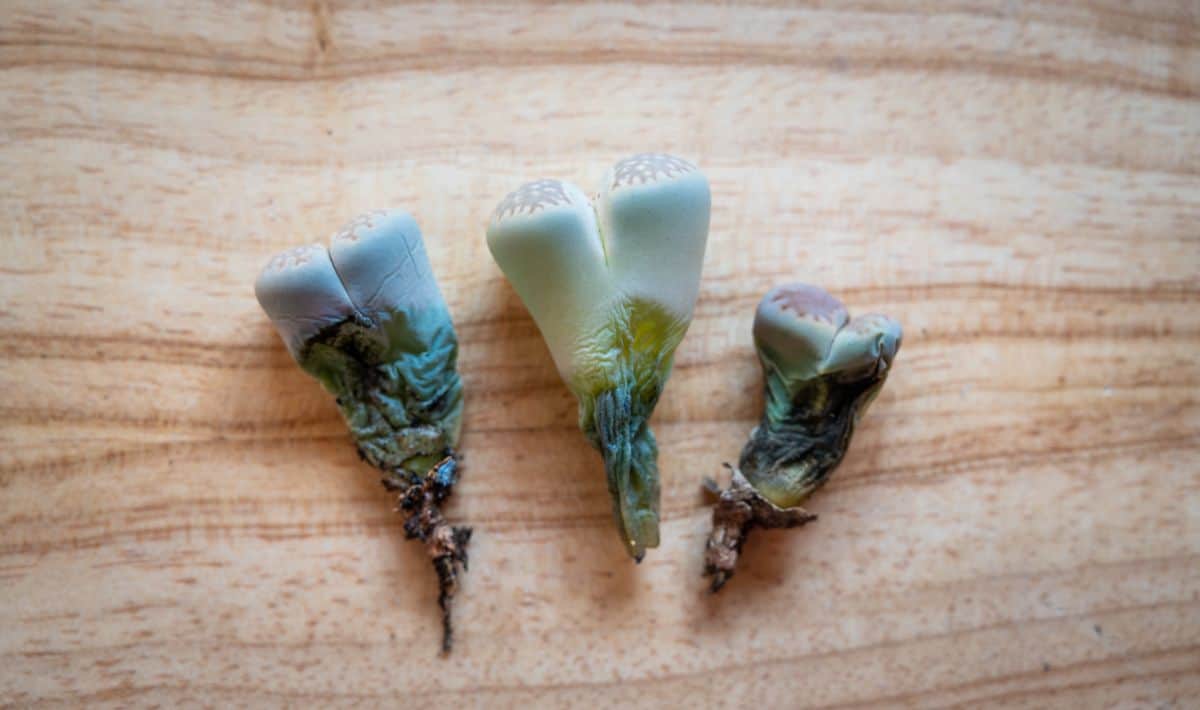
So, how do you know if your succulents have been overwatered? Well, there will be a few obvious signs. Whether or not you can save an overwatered succulent will depend on how much damage has been.
If you’ve accidentally overwatered your succulents just a time or two, it’s likely they’ll be able to bounce back with little permanent damage. However, if you’ve been overwatering them for quite a long time, the damage might more than they can handle.
Jump to:
Preventing Damage from Overwatering
The best thing you can do to prevent your succulent from being damaged by overwatering is to prevent it in the first place. Remember, succulents tend to prefer arid environments where they get water infrequently. The best thing you can do for your plants is to simulate their natural environment.
Succulents in the wild need well-draining soil in order to live, so make sure your plant has enough drainage, both from the soil itself and the container. Using the right supplies for your succulents will help keep them vibrant and healthy, as well as preventing damage from too much water.
Soil
One of the most important aspects of preventing your succulents from being overwatered is to plant them in soil that encourages the drainage of excess water. Succulents do not thrive in clay-heavy soils and instead prefer soils that do not retain water.
Soils with large particles such as sand, perlite, gravel, and even bark are ideal for succulents. Your local nursery or garden center may even have soil labeled for use with succulents and cacti. Just be sure you aren’t buying soil intended for use in vegetable or flower gardens. Your succulents won’t enjoy the amount of water those types of soil retain.
Of course, you can always make your own soil too. Although succulents need the drainage of large particles such as sand, you’ll also need some sort of organic compound to provide your plants with essential nutrients. Of course, you can always supplement with plant food if you don’t think your succulents are getting enough nutrients from their soil.
Not only does this type of soil discourage excess water from hanging around, but it also allows airflow around your plants’ roots. This is essential in a healthy succulent root system and will help prevent root rot.
Containers
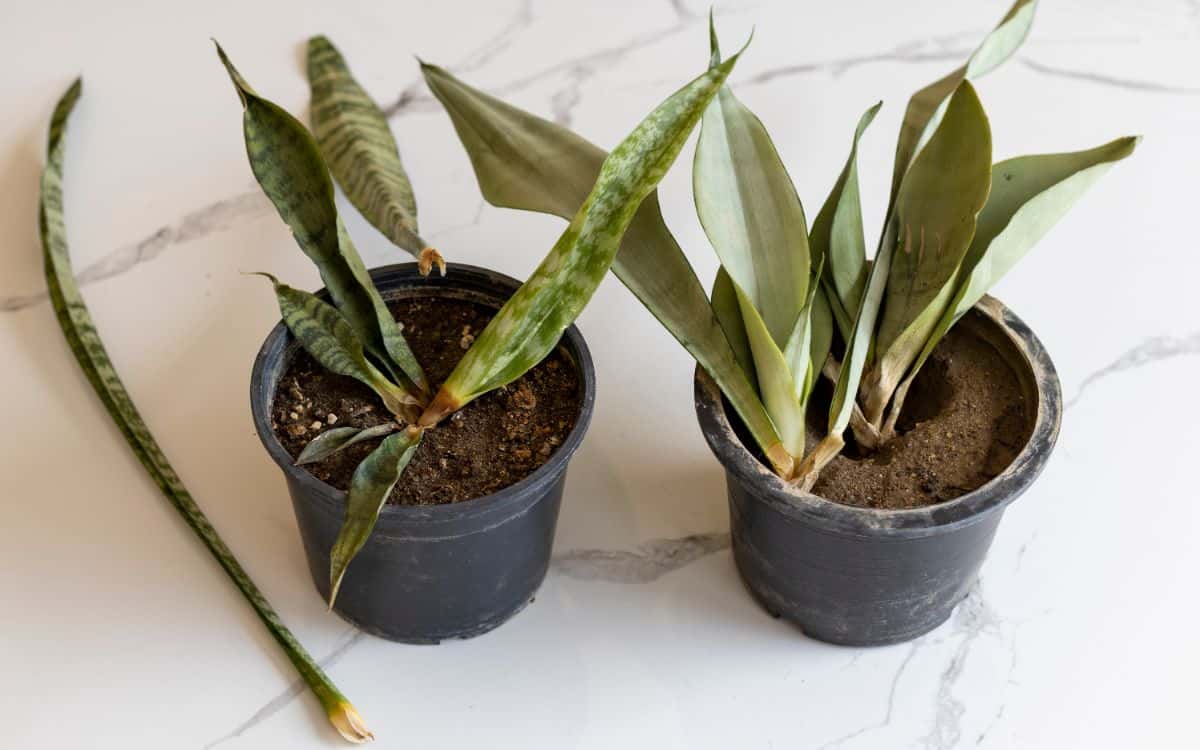
Getting your soil right won’t do you any good if you’ve planted your succulents in containers without adequate drainage. Those quirky planters without drainage holes might be a stylish addition to your garden, but they’re not ideal for succulents.
If you absolutely must plant your succulents in containers without drainage holes, there are a few things you can do to make sure they stay healthy. Mainly, you’ll need to monitor the soil’s moisture levels and make sure you aren’t overwatering.
You can also try methods like using a cachepot, which is simply a smaller pot with a drainage hole planted inside of the larger pot without the drainage hole. This allows the water to drain away from your plant’s roots and out of the smaller pot.
It’s a common misconception that putting gravel in the bottom of your pots will improve drainage, but unfortunately, this is just not true. If you’ve never heard of the phenomena of perched water tables, you can read more about that here.
Of course, you can always drill drainage holes into your clay or terra cotta pots. It’s easy to do, especially if you’re already handy with a drill!
Location
No products found.
Where you keep your succulent collection could also be a factor in overwatering. If you keep your succulents outdoors, you’ll need to be careful about their exposure to the rain. A little rain can be quite good for them, but a lot of rain can spell trouble.
If your outdoor succulents are planted in containers that can be moved easily, you might want to bring them indoors or under cover if you’re expecting significant rainfall.
If your succulents do get rained on, you’ll need to make sure they don’t sit in standing water any longer than they need to. This means you’ll need to pour out excess water, if possible, and set them out somewhere warm and sunny to dry afterward.
Overly wet outdoor succulents are more susceptible to frost damage, so if your succulents get soaked and you expect it to be a chilly night, consider bringing them inside or keeping them covered.
Regardless of whether you keep your succulents indoors or outdoors, you’ll need to be aware that your succulents will need less water in cool or humid weather than in hot and dry weather. If you live in a climate like Arizona, you may find yourself watering more often than you would if you live in Maine.
This also means you may need to adjust your watering schedule throughout the year to accommodate the changing seasons. If you water your succulents and cacti in winter as you do in summer, you’re going to end up overwatering them.
Signs of an Overwatered Succulent
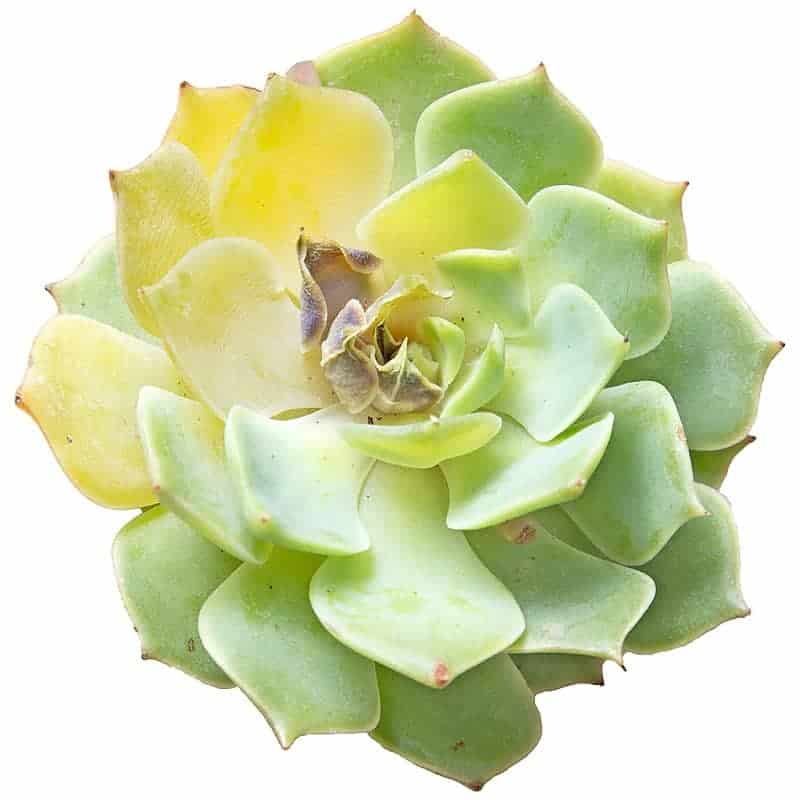
So, how can you tell if your succulents have been overwatered? There are a few obvious signs to look for, so if you notice these changes in your plants, be sure to act quickly to prevent further damage.
Succulents that have been overwatered will often have mushy leaves. The leaves might also be a lighter color than they usually are or take on a yellowish hue. Overall, your plant will begin to take on a rather unhealthy appearance.
Many types of succulents will also drop leaves quite easily when they’ve been overwatered. Due to the amount of excess moisture in the plants, they often become quite fragile. Typically, it’s the lower leaves that will drop first.
Remember, a succulent’s leaves should be firm and plump but not mushy. While some plants might be more delicate than others, they should still have a relatively robust appearance.
On the other hand, if your succulent’s leaves appear wrinkled or dehydrated, you may not be watering your plants often enough. The leaves might have a flat, deflated look to them. Just because succulents can go long periods of time without water, doesn’t mean you don’t need to water them at regular intervals.
They’re nicknamed fat plants for a reason, so if your succulents’ leaves don’t look thick, healthy, and hydrated, it might be time to adjust your watering schedule.
What to Do if You’ve Overwatered Your Succulent
So, you’ve accidentally overwatered your beloved succulents, now what? Don’t stress! It happens to the best of us, but there’s a good chance you can still save your precious plants from root rot.
If you’ve done the preventative work of making sure your succulents are planted in inappropriate soil and containers with drainage holes, it’s likely that your plants will survive. If you’ve accidentally overwatered your plants yourself, or they’ve been left out in a torrential rainstorm, you’ll need to dry the soil out at quickly as possible.
If you can see standing water in the container itself, you’ll need to remove the excess water if you’re able to. If the pots are small enough, you can tip them over. Simply hold the soil in with one hand while you use the other to flip the pot over to drain.
If your containers are particularly large, you may only be able to tip them over a bit. If your containers are placed in saucers, be sure to empty those saucers too! The water from the soil won’t be able to drain if there’s nowhere for it to go, so make sure your containers aren’t sitting in standing water.
One of the best ways to dry out wet soil is to place the container in a warm, sunny area to dry out. The warmth of the sun will evaporate the excess water more quickly than it would if the plant were sitting in a shaded area.
Just be sure you keep an eye on your plants so they don’t get sunburned. It would be a tragedy to risk your plant's lives by overwatering them only to let them get burned by the sun too!
Again, you’ll need to avoid exposing your plants to any freezing temperatures or cold drafts. When your succulents are filled with water frost damage can be fatal, so keep your plants inside if the weather is cool.
If you’re really worried about your succulents’ roots after being overwatered, you can also remove the plants from the soil. This way, you can check the roots for any signs of root rot and let them air dry.
To dry out your succulents’ roots, gently remove the plant from the soil. You may need to tip the container on its side if it’s particularly large. You want to remove the plant from the soil without damaging the root system.
Once your plant is free from the container, gently shake out the excess soil or rinse it underwater. Rinsing the roots when they’re already wet won’t damage them further but cleaning them off will help them dry more quickly.
After you’ve removed the excess soil, you can check the roots for any signs of root rot and remove the damaged areas if necessary. Otherwise, you can leave your uprooted plants in a warm, dry area for a couple of days to let the roots thoroughly dry out.
Signs of Root Rot
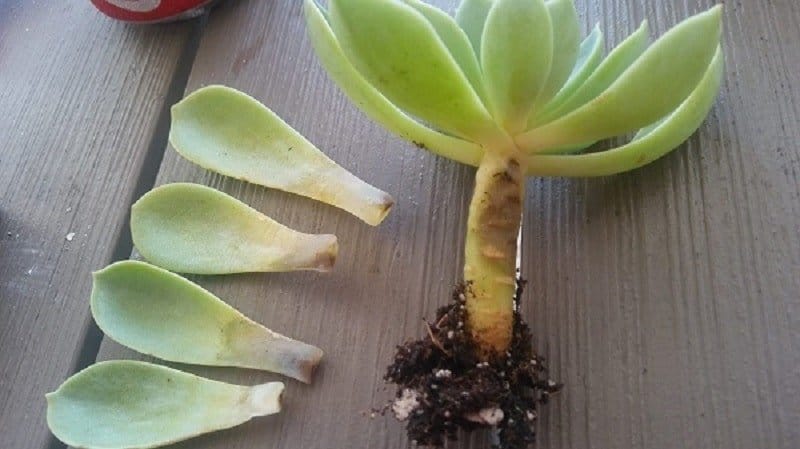
Unfortunately, you’re unlikely to notice any outward signs of root rot until it’s too late. Root rot is typically only visible beneath the soil surface until it begins to seriously affect the health of your succulent. At that point, it’s often too late to save the plant.
Yes, that’s right, once your beloved succulent’s roots begin to rot there’s not much you can do about it. Your only option is to write your succulent’s eulogy. If the rot hasn’t yet begun to affect the upper portion of the plant, you can also try beheading it.
Beheading your plant and propagating the cutting might be the only way to save your plant if it has begun to rot due to overwatering. If this is the case, you’ll want to be sure to let the cutting dry out and callous for a few days prior to planting.
If you do happen to notice your plant’s roots rotting in the early stages of root rot, you may be able to cut away the affected areas. This won’t always save your plant, but if done early and correctly, it might give your succulent a fighting chance.
If you’ve uprooted your succulent, to aid in drying it out, look for any dark brown or black roots. Discolored roots are one of the first signs of root rot, so if only a portion of the root system has been affected, you might still be able to save your succulent.
If the root rot has progressed to the point of affecting the parts of the plant that are above soil, you’ll notice the usual signs of overwatering such as mushy or discolored leaves. Leaves may begin to drop and eventually the plant will die.
Proper Watering Techniques
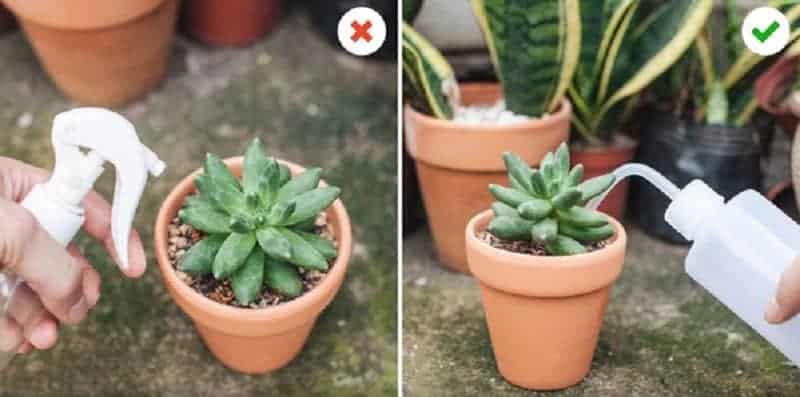
One of the most important yet challenging aspects of growing succulents and cacti is figuring out the right watering schedule. Succulents don’t like too much moisture, but too little moisture can be just as damaging.
However, in order to prevent overwatering, you might need to experiment a little to find the right watering schedule for your precious plants.
As we’ve mentioned before, how frequently you water your plants will depend on a few factors. If you’ve provided your succulents with plenty of drainages and your climate is neither extremely wet nor extremely dry, you should be able to water your plants about once a week.
Again, you’ll have to adjust this schedule as the season's change. You might need to water more during summer, especially if it's particularly hot and dry, while you can cut back a bit in the winter. Some succulents even go dormant in the winter, which means you may not need to water them at all.
As always, be sure to research any and all succulents and cacti that you bring into your home so you can know exactly what type of care they need. The more you know about your plants, the better care you’ll be able to give them.
To prevent overwatering, it’s crucial that you avoid watering your succulents while the soil is still moist. To check, you’ll need to stick your finger into the soil to check for moisture. The reason for this is that the top layer can be dry, but just an inch or two down might still be quite moist.
If the soil is dry, water as normal, but if the soil still feels damp, you might need to wait a few days. If you have any doubts about whether or not you should water your succulents, consider waiting a few days before watering.
Your plants are unlikely to suffer any damage from going an extra two or three days without water, but watering while the soil is still moist will put your succulents at risk of developing root rot. When in doubt, wait it out!
Soil Moisture Meters
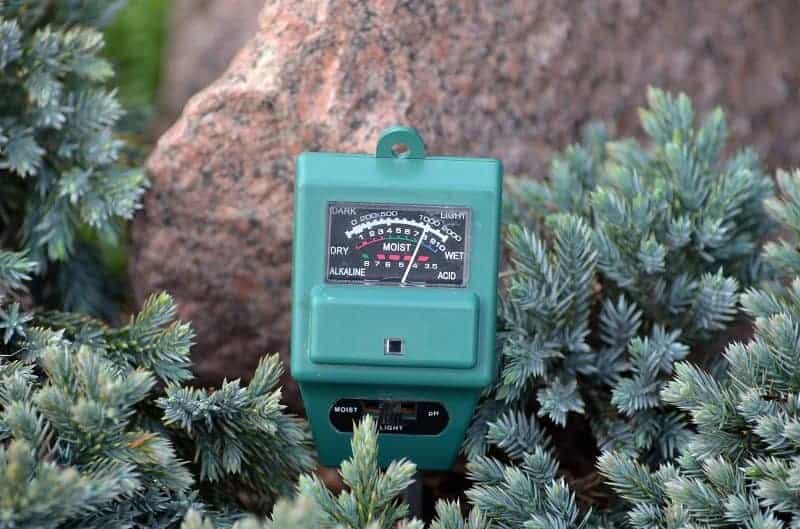
If you’re having a difficult time determining whether or not your succulents are ready to be watered, consider investing in a soil moisture meter. Soil moisture meters are small devices that measure the amount of water in the soil. They usually have one or two long probes that are inserted deep into the soil.
Soil moisture meters come in a variety of different options. Some are battery-powered, while others are battery-free. Some will also measure important things like light levels and soil pH levels. Meters will also vary in length, so if you’re working with particularly deep pots, you might need to find a moisture meter with longer probes.
The price of these devices will depend on the type of soil moisture meter you’re interested in. Simple, battery-free meters are usually quite inexpensive. If you’d prefer something a bit fancier, such as a meter that sends information directly to your smartphone, you might need to spend a bit more.
Shopping for soil moisture meters can be a bit overwhelming, but we’ve put together a list of the Best Soil Moisture Meters for 2020 so you can spend more time with your succulents and less time shopping for supplies.
Conclusion
Even the best gardeners are bound to lose a few plants here and there. It’s important not to get discouraged if you lose a few plants to overwatering. Consider it a learning experience and try again!
Remember, the key to saving your overwatered plants is to prevent them from being overwatered in the first place. Research the plants you bring home, monitor the moisture in the soil, and adjust your watering schedule accordingly.


